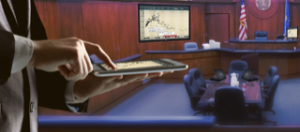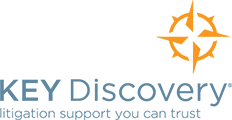Most non-millennials will remember the 1939 musical fantasy “The Wizard of Oz” in which Dorothy and friends are in search of the great and mighty Oz. In one key scene – having found Oz – Toto pulls back the green silk curtain to unveil that the wizard is not great nor mighty, but a diminutive old man pulling levers and pushing buttons. ‘Pay no attention to that man behind the curtain!’ he shouts. While this phrase has likely never been uttered in a courtroom, a successful trial lawyer will have a wizard or two hidden behind a figurative curtain.

In any courtroom trial, the last place you want the jury to focus is on your team struggling with the A/V equipment, failing to load a presentation, or displaying exhibits out of order. Hence the need for a skilled trial technician (a.k.a hot seat operator). Your hot seat operator is your wizard behind the curtain, editing displays on-the-fly, anticipating the trial lawyer’s every need, and focusing the jury’s attention on the content of the presentation and not on the mechanics of how it is being displayed.
However, not all hot seat operators are created equal. To use our Oz analogy, would you rather have Glinda the Good Witch in your corner: dispensing wisdom, directing the trial to a positive outcome, and dazzling the jury with a groovy pair of ruby slippers? Or would you choose Toto, Dorothy’s little trickster dog: constantly running off, creating havoc, and pulling back the curtain so everyone sees the wizard behind it. As cute as Toto is, we’ll take Glinda and her rosy disposition any day (bonus if she throws in a pair of those ruby slippers).
Let’s take a deeper look at the skills hot seat operators bring to the table. Keep in mind that as the experience level increases, so will the price point. However, this is an area where paying for experience will pay off in the long run.
- Knowledge of PowerPoint and other trial presentation software (i.e. Trial Director and Sanction)
- Ability to set up and tear down A/V equipment
- Experienced operators can troubleshoot most A/V issues and communicate solutions concisely and quickly
- Perform video edits on the fly
- Create and edit basic PowerPoint slides
- Group relevant exhibits and testimony clips on the spot
- Perform a video/transcript synch on the spot and load it
- Anticipate council’s needs
- Follow witness outlines and testimony
- Advise council on the effectiveness of the presentation (is the jury bored and falling asleep or are they taking notes and nodding in agreement)
As technological advances become more mainstream, an increasing number of trial judges are not only encouraging, but expecting, courtroom technology. The old-school way of doing things is out and smartboards, flat screen monitors, and multi-screen displays are in. In fact, the National Center for State Courts (NCSC) recently held its biennial Court Technology Conference 2019, touted as the most advanced court technology exhibit show in the world. At their most recent conference in September, a number of industry experts discussed the future of technology in the courtroom.
With this level of technological growth happening in U.S. courtrooms, we can fully expect the demand for hot seat operators to increase exponentially, and legal services companies to include it as part of their trial services offerings.
In the end, hot seat operators will soon move from a luxury to a necessity. When the stakes are high and the pressure intense, you need someone you can trust who can keep calm and perform.
